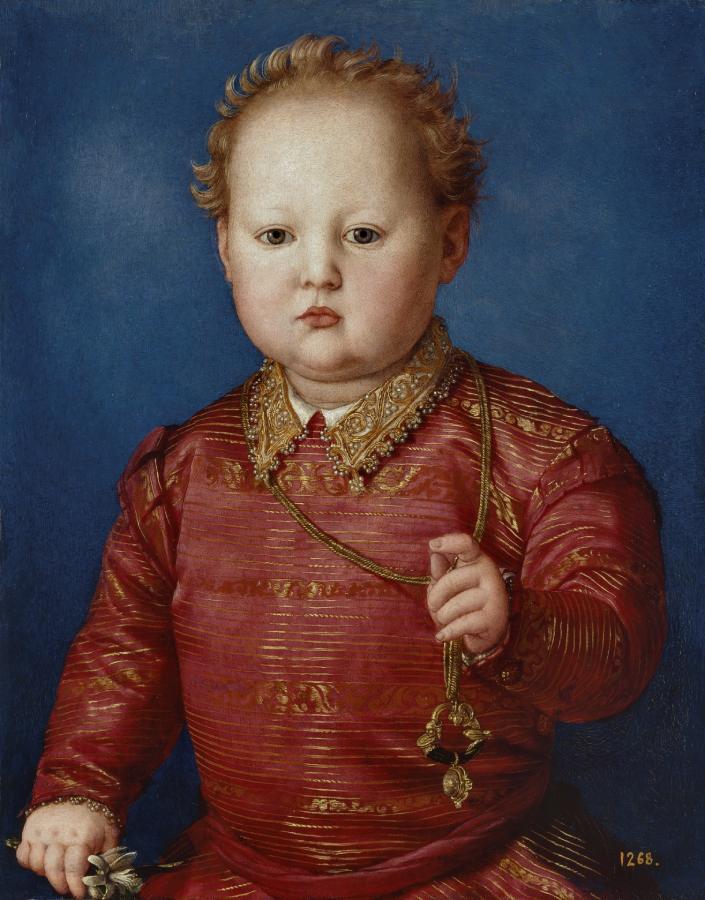Bronzino (1503-1572)
Garzia de’ Medici
c.1550
Oil on panel, 48 x 38 cm
Museo del Prado, Madrid
This portrait of García de’ Medici (1547–1562), third son of Cosimo de’ Medici and Leonor de Toledo, is an excellent example of the scant interest in the depiction of children prior to the Enlightenment period. Bronzino offers a faithful rendering of a child’s small, undefined features, but presents him with the same distant, impassive pose used for adult portraits of the Florentine court ambit. García is seen here above all as an heir to the dukedom of Tuscany and for this reason the artist omits any expression or gesture that may encourage us to see a child.This is quite the opposite approach to the relaxed portrait of Boy holding a Drawing by Caroto. García, whose status is reflected in his sumptuous red silk and gold jacket, richly adorned at the neck and wrists with pearl-sewn embroidery, does not therefore play with the costly trinket that he holds, but rather displays it as if aware of its value. This jewel, which has on occasions been incorrectly identified as a rattle, was an amulet intended to ward off the evil eye. It takes the form of a harpy resting on a horn from which hangs a precious stone. Amulets with harpies/mermaids were used by Neapolitan women for protection during pregnancy, and it may thus have been given to García by his mother, Leonor, or by his grandfather, Pedro de Toledo, Viceroy of Naples. In his other hand the child holds a recently opened orange blossom, a symbol of the purity and innocence characteristic of his age. The portrait has been attributed to Bronzino but it has been considered a workshop replica of a lost original. In fact, it is a workshop production, a fact most clearly evident in the execution of the child’s hands and clothing, which lack the precision and lustre typical of Bronzino’s hand. He is very likely to have intervened on the face, in which, however, he seems to have used a stencil. The painting can be dated to around 1549–1550 given that García was born in 1547 and cannot have been more than two or three years old here, to judge from his face.6 In addition, in the portrait of García in the palazzo Mansi in Lucca, documented in 1551, he appears to be one or two years older, confirming this hypothesis. It is known that Bronzino painted two portraits of García in 1550, one of which was received by Pope Julius III in June, while the other was finished in July on the occasion of his baptism. Given their importance, neither of these works is likely to be the Prado portrait, which was only partly executed by Bronzino himself.
Redin,G, ‘Bronzino. Retrato de García de Medici’ En: El retrato del Renacimiento, Madrid, Museo Nacional del Prado, 2008, p.238-239 n.42.
See also:
• Medici, Garzia de’ (1547-1562)
